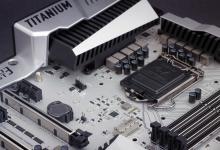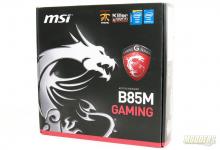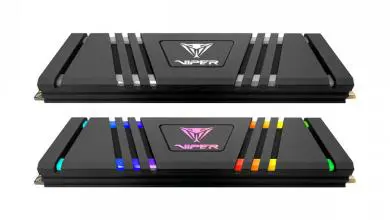BioStar Racing B360 GT5S Motherboard – Video Review
Finally a low-cost Coffee Lake gamer?
Up until recently, buying an 9th Generation Intel Coffee Lake CPU has required you to also purchase a high-end Z370 chipset motherboard. Those boards also came with a high-end price tag of $200 or more. One of these new boards, the BioStar Racing B360 GT5S, is on store shelves now for just $109, and it’s packing come pretty compelling features.
Starting off, this is an ATX motherboard, with support for all Intel Coffee Lake CPUs, which means the i3-8100 and i5-8400 may finally start making sense for gaming builds. There are 4 DIMM slots for DDR4 memory up to 2,666MHz, 3x PCI Express x16 slots and 3x 1x slots, Two m.2 slots, one of which supports nVME or Intel Optane drives, the other supports both m.2 SATA or nVME storage. There are also 6 SATA ports for the rest of your storage needs.
Around the rear, we find a pair of USB 2.0 ports, a mix of USB 3.1 Gen 1 and Gen 2 ports, as well as a Gen 2 Type-C connector. Three display outputs with 4k support via HDMI 2.0, 1080p over the DVI connector, and… VGA??? I can’t say I’ve ever seen USB-C sharing space with a VGA port, and at this point, it seems about time to let that one go.
Some other notable features include built in over-current and overheat protection, an 11-phase power delivery, and some of the most complete RGB controls I’ve seen in a motherboard yet, let alone one that only costs $109. The RGB is configurable in three zones, with LEDs that line the left side of the motherboard, and two additional RGB headers in the top right. These work amazingly with the available BioStar Racing GT software.
The additional headers are the standard 12v 4-pin variety, that work with a number of products right out of the box, or you can build your own using RGB strips from Amazon like I’ve done here.
Biostar Racing GT works very well for setting up lighting profiles, and while there aren’t a ton of options to choose from, the ones that are there to work well. You can set a static color, breathe, flicker, or have the LEDs react to music and sounds from your computer.
Booting the system for the first time, I ran into something a little curious… My i7-8700k was already overclocked slighly, running at 3.78GHz rather than the stock 3.7. Memory was overclocked as well, posting at 2,178 instead of 2,133. With XMP enabled, the memory jumped all the way to 2,723MHz.
It wasn’t until I installed the Biostar Racing GT software that I discovered the base clock is automatically set to 102MHz rather than the stock 100MHz. And outside of that program, I can’t figure out where to change it. But every reboot, I’m seeing the same numbers in the BIOS, even after a BIOS reset. A 2% overclock isn’t usually worth talking about, but I did run into some performance issues with that 102MHz base clock with XMP enabled. On a few occasions, I experienced Blue Screens while trying to launch the Racing GT utility, and observed performance in Cinebench that was nearly half of my stock testing, hitting 809 with XMP enabled, verses 1,431 without it.
I don’t typically mind if motherboards include unique ways to overclock, but at the end of the day, those clocks have to be stable, and I need a way to disable them. Outside of running the Racing GT software and setting the base clock to 100MHz, I don’t seem to be able to adjust this.
So, what are you missing out on by going with the BioStar B360 GT5S over a well-equipped Z370? Basically, it comes down to overclocking and SLI support. As of 2018, I’m calling multi-GPU systems a thing of the past as far as gaming goes, as only a select few titles handle SLI with explicit profiles, and even then, you’re likely not going to see a return on your GPU investment. Also if you don’t plan on running one of Intel’s k-series CPUs, this board seems to have every other feature box checked.
So, what’s the verdict here? On paper, the BioStar Racing B360 GT5S has almost every feature you could want. Dual NVMe ports, USB-C, excellent RGB lighting support, and a well thoughtout, making installation and cable management a breeze.
I’m going to hesitate to recommend this one though. With multiple blue screens while both launching and using the Racing GT software, to the forced overclock, to hints of ram instability with XMP enabled… At this time there are just too many little things that might be workable to an advanced user, but would frustrate the heck out of a person building a system for the first time. So while it’s a no right now, it seems both of my main problems here could be solved with either a software or BIOS update. Perhaps we’ll need to revisit this one in the near future to see if those stability issues can be resolved.








